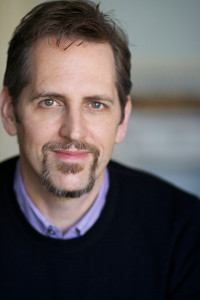Backspace,jpg. by ElbridgeGerry is licensed under CC BY-SA 2.5
Writing is rewriting. How many times have we heard that?
We get it: the first draft is probably far from the best, finished version. And the writing process involves getting feedback and then making changes. Then repeating this process. Possibly many times.
But is there a more systematic approach to rewriting? Different elements you’re looking to address, in some coherent sequence? Where you’re in charge of a methodical process rather than just flailing around to try to do what others say you need to do?
First, some review. Touching on points I’ve made in prior posts:
1. While there is some use in writing a “vomit draft” at first, to get to the rewriting as soon as possible, if it’s too “vomit-y” it might not be of much use. So I still look to write from a solid framework and take my best stab at each scene, while not getting too precious about it.
2. When getting notes from others — that key step that leads, unfortunately, to having to rewrite — it’s important they be objective knowledgeable others, preferably people who work in screenplay development professionally or close to it, who aren’t friends and family or anyone wanting to protect a relationship with you (and thus maybe being less than candid or helpful). Which might mean paying someone.
It’s also important that you actively and openly look for the “problems” that others see, including the biggest problems with the basic story concept, which we want to get right before getting into the details. That means being non-defensive and asking the questions you don’t want to hear the answers to, like “Did you care about the characters and what they were going through?” Or: “Did it seem believable?” Or: “Was it entertaining?” If they pitch fixes to problems but aren’t identifying what the problems are, look to get behind their “helpful suggestions” to what they think needs fixing. Don’t use their fixes unless you love them. Find your own, once you agree on what needs fixing. Which might require getting multiple opinions and seeking consensus.
3. Keep your own counsel by putting scripts away for a while and then coming back to them with fresh eyes when you’re no longer so emotionally attached. You’ll likely have your own notes that stimulate a rewrite, because you know how you can make it better, which is always the best feeling. Having good actors do a read-through can also help you find that objectivity, and see what might need fixing.
So once you have the “notes” about what you want to make better, how do you approach the rewriting process?
1. Start with the biggest and most important issues with the basic story concept or structure. Don’t be tempted to “arrange the deck chairs on the Titanic” by only working on the smallest, easiest, scene-level fixes without really addressing the larger problems. We writers always want to do this. It never works. We usually have to throw out and rethink much more extensively than we want, to really address the most important notes.
2. Work to shift into a creative brainstorming mode to find answers, rather than staying stuck in analytical and critical thinking. This is where good ideas come from.
3. Once you’ve rethought the concept and structure as needed, and re-outlined, and are working on the actual scripted scenes, think in terms of “passes” on the script. Each one with a different function. Here’s what that looks like for me:
First I try to sketch out the script as best I can, making sure each scene advances the plot and character material as I’ve outlined it. So that the spine of the narrative is moving forward from scene to scene in a coherent and compelling way. The main character is actively pursuing their agenda and running into conflict. Which changes of the game and keeps the status of their main problem/goal evolving.
I find this is important to get right first. But inevitably I will still be missing some things that are important. It may be solid plot-wise (which is a big achievement), but to make the script really sing, there are some other elements to focus on next. I find it helps to focus on them one at a time, making a “pass” through the script that’s only about improving that one specific area, before moving on to the next.
Here are the areas that usually need such a “pass”:
1. REALNESS. The biggest issue with so many scripts is that they don’t radiate authenticity and believability. They don’t draw the audience into a world that is vividly and realistically depicted that makes them feel like this all is really happening, and that really places them in that universe. The characters also might feel like functions of a plot more than specific three-dimensional people behaving in ways that make complete sense given who they are and the situations they’re in. Don’t underestimate the value and need for a level of realness that is probably not in your initial drafts. At least I know it’s usually not in mine.
2. CHARACTER VOICES. I find it helps to have an actor in mind with each character, or a real person, and as I go through the script making a “character pass” for them, I try to make sure what they do and say feels unique to them and consistent, which is easier to do when you have that individual performer or person in mind. Even if you’re writing a true story, imagining the historical person speaking and acting often doesn’t work as well as imagining the actor who could play them, believe it or not. Try to make it castable and actable — with distinctive dialogue that feels believable and has subtext, when appropriate. It’s a movie, after all, or a TV series — not just a recreation of history with the real person saying what they really said. (Which you probably don’t really know, anyway, and had to make it all up.)
3. ENTERTAINMENT VALUE. This can be tricky because you have to balance it with REALNESS. Going too far with one often compromises the other. But if it’s a comedy, there’s a place for just looking to punch up all the comedic moments. If it’s a thriller, doing the same with the scary suspense scenes. If it’s an action, then it’s the action scenes. Looking to make it maximally fun for the audience consistent with its genre, without sacrificing realness.
4. SCENE DESCRIPTION. I’m not someone who writes punchy description early in the process that just jumps off the page and makes it a great read. But this is important, and easier to address when making a “pass” through the script focused only on that, and nothing else.
5. THEMES AND ARCS. I end my book THE IDEA with “MEANINGFUL” as the 7th element of a viable story: the “M” in the acronym “PROBLEM.” This includes the greater takeaways from the story beyond the surface plot that make it resonate, that touch on larger human issues. And it includes the way characters grow and change (or are at least confronted with possibly growing or changing). It’s easy to end the movie with some artificial, forced nod toward change having happened; it’s much harder to layer and weave that need for change — and characters considering changing — believably throughout the script. The same with “what you’re trying to say” or what’s the real reason for writing this — your thematic material. It has to be handled subtly, not forced or “hitting people over the head.” It shouldn’t completely drive the process, in my view, either. So I don’t start with theme. That said, it often gets lost in the shuffle when focused on getting the plot right, and in later passes, I sometimes focus just on this element, which, like the others on this list, could be multi-faceted and lead to multiple passes on its own, each dealing with a different theme or character arc.
So yes, writing is rewriting: meaning that the finished project is almost entirely “rewritten material” from a first draft that the reader and audience never see. And these, to me, are the key steps and practices in that.
I would also leave you with this: rewriting can be fun. Even the most enjoyable part of the process. Yes you have to solve problems that might take some work. But you’re also, when making these “passes,” not facing a blank page. You’re just making something better and better that hopefully already was pretty decent to begin with.



Love this. I’ve always struggled with rewrites and this lays it out so much more clearly than I’ve seen elsewhere. Also dealing with a new diagnosis that makes it really hard for me to focus and I wonder sometimes if that’s my main problem. Thanks for this clear and organized list!
So glad to hear you find it helpful Gina!
Thanks, Erik, for your blog on Writing is Rewriting. I have saved it along with your other blogs to help me with my rewrite of my screenplay. Due to administrative tasks that I have had to do recently, I have done more thinking about my rewrite than actually rewriting. As a member of SAG-AFTRA, I have spent the last few weeks streaming digital copies of actors in movies nominated for the SAG Awards on my laptop. As I watch these movies, I think about how they work for me as a viewer and also how they work with The Seven Elements of a Viable Story in your The Idea course.
Of all the movies I watched, one movie stands out above all of the other movies in all aspects. It is CODA, which I loved. I also read the screenplay for my Story Board class and the screenplay and the movie were very similar. I had various issues with other movies, mostly due to story and not caring about many of the main characters.
That’s great to hear, thanks Bonnie! I haven’t seen CODA yet but it broke the record for purchase price of an independent film debuting at film festivals ($25M). Looking forward to checking it out…
Hi Erik,
I’m still in the middle of my rewrite and I thank you for giving me a few necessary shoves in the right direction. Thanks also for sharing your knowledge with us.
Bob
Thanks for the comment Bob!
I love this, especially imagining specific actors as the characters. I’ve had trouble making each have a unique voice.
Thanks!
Great to hear you found it useful, thanks Lynnette!
Thanks EB, I had to read this and glad I did. My new takeaway from … Rewriting is your good advice about honing one element of style at a time such as theme or a character, and that multiple passes on each may be necessary. Voila, polished first draft All the best, HJ
I wish it was as easy as your “Voila” makes it sound but yes that is the idea! 🙂
I appreciate you taking the time to comment and glad you liked the post Harry!